Hello steemit!
I thought it would be nice to introduce some of the work that I do at the European Space Agency and with #suesas-sciencechallenge it was a great opportunity to do so!
I hope you will enjoy reading it, and I am happy to answer any questions you may have about what it's like to work in the space sector!
The workplace
It’s been close to a year since I moved to Paris from my hometown Stavanger in Norway to start working at the European Space Agency (ESA) as a Young Graduate Trainee. Although I was happy with the job I had, it was always a dream of mine to work with space. So when the opportunity came to work with ESA, the decision was easy!

The ESA Headquarters in Paris, France where I go to work. Picture taken by me
ESA has centres across Europe from Italy, France, Germany, the UK and the Netherlands. Each focus on different activities such as science, technology development, astronaut training, mission control, satellite applications, launchers and administration. The headquarters, where I work, is perhaps not the most exciting place if you hope to see advanced technologies or watch astronauts in training. It is, however, the place where the 22 Member countries come together to discuss budget allocations and mission priorities for the agency. It is also the workplace for the General Director, and the strategy department. Therefore, it's a great place to be to get the latest news on what the agency will do next, and want to understand the full width of European space activities.
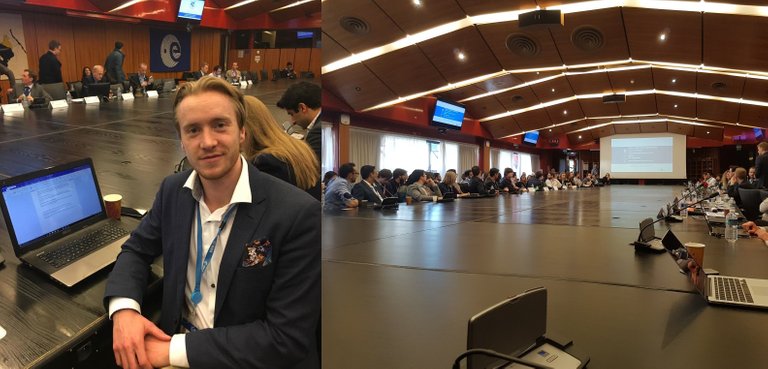
Me in the main meeting room where ESA does its council meetings. We used it to host a conference for the Space Generation Advisory Council (SGAC) European workshops, a network for young professionals in the space sector.
So what do I do?
Although I intend to go to space at one point in my life, I’m not an astronaut quite yet! As a Young Graduate Trainee I currently work with “downstream applications”. This refers to all space activities and infrastructures whose applications and data are used to benefit Earth rather than advancing space exploration capabilities. It also includes the technology transfer program which looks at how new technologies developed for space can also be used in non-space industries. After all, something has to come back down to earth after all the things we keep sending up!
Europe has built a lot of infrastructure in space, from Earth observation satellites in the Copernicus program that provide new images of every corner of the globe for free updated every 5 days (I use images from these satellites in my Beautiful Satellite Images of our Planet you won’t believe are real series), to new European satellite navigation systems in GALILEO which will provide an independed GPS system for Europeans, and increase the accuracy of services when combining it with Russian and American satellites. With all of these new technologies coming online, it is important to make sure they are put to good use, and those who can benefit from the data are aware of its existence.
Here I work on behalf of ESA and national space centres in Europe to help foster new user uptake in society. This involves communicating new space-based technologies and satellite data to user communities that can benefit from them, to assist them in the take-up of existing or new technologies, and to help facilitate knowledge transfer between European regions that can benefit from the same satellite-based solutions.
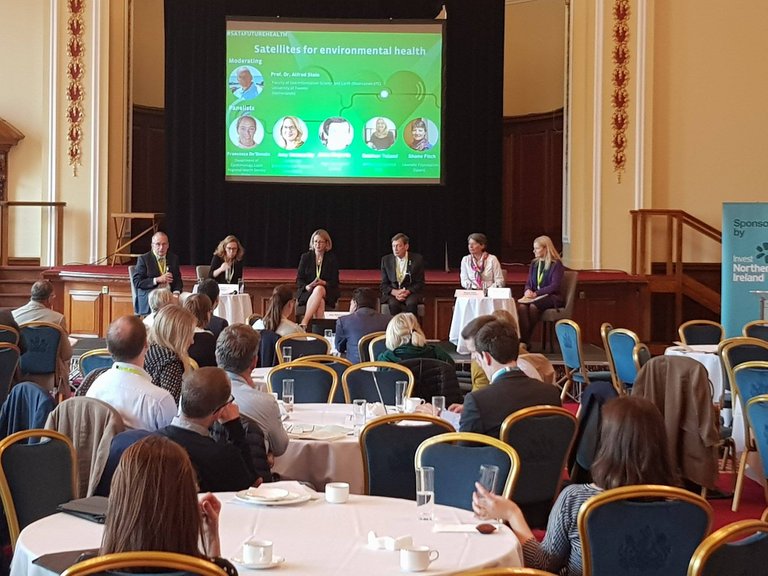
In June we hosted a conference in Belfast Northern Ireland on what Satellites can do for the health sector. One topic was environmental health, as satellite images of cities help us monitor and deal with pollution and heat waves among other things. Picture taken by me
What I love about my job is that I get to see and experience all the ways different space technologies and satellite data are used in practice. One day I may look at how satellite radar-data can be used to predict and warn of avalanches and rockfalls in mountainous areas, and then the next day how farmers can increase their crop yield, or water more efficiently, based on frequently updated image data of their fields.
To the right, you can see one by the Norwegian Geological Service using radar satellite data to determine where the ground is sinking more rapidly than others. The other image by the University of Maryland shows how different parts of the electromagnetic spectrum provide insight about the health of plants and the dryness of the soil for agriculture applications. These are two out of many unique applications I get to work with, and hope to share in my new series Amazing & Disruptive things we can now do with Satellites.
Another things I love about my job is that I get to travel across Europe to observe how pioneering users are developing and using satellite-based services and learn what obstacles the potential users experience. As I believe that the use of satellite data will continue to increase intact with the growth in small size satellites and reusable launchers, this level of market insight could be very valuable to have. Perhaps my next adventure will be to start a company around one of my ideas for how satellite image-data can better solve problems here on earth? Who knows!
Today I manage a project on how satellite applications can benefit search and rescue services and civil protection agencies in the Alps. Here I am responsible for researching the current state of use among relevant organisations in 6 countries and build a conference around the theme with partners in the relevant countries. A normal day at work is therefore mostly spent surveying the demand and needs of existing and potential users of relevant satellite applications (Earth observation data, navigation services and communication service for remote regions), as well as coordinating the work we do with partners in the different regions.

Me (standing 4th from the right-hand side) and my team together with the speakers, technology experts and local partners for our event “Satellite Applications for the Alps” in Berchtesgaden. My current project builds on this work.
It is also a good opportunity to get to know the European Space Agency, and European space business, by working at the ESA headquarters and being part of their internal communications network. Since my dream is to help push the space frontiers within exploration, and build the next generation of space infrastructure, I see this experience as invaluable.
Following Space activities at ESA
Not all days are quite the same though. Every now and then an ESA mission reaches a critical stage of its journey. This can be the arrival of a spacecraft to another planet or the announcements of new discoveries. On these days, employees get the opportunity come together and watch directly off the screen that shares the same information retrieved at the mission control centre. So far, this has happened twice during my 10 and a half months at ESA. Once when the Rosetta mission came to an end, and secondly when the ExoMars Spacecraft arrived in Mars orbit where it deployed the Trace Gas Orbiter successfully in orbit around Mars, but failed to land the Schiaparelli lander.
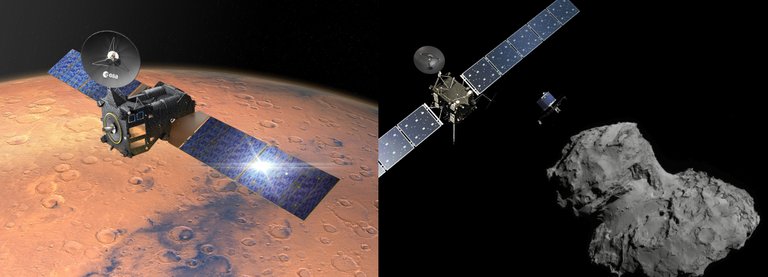
To the left is an illustration of ESA's Trace Gas Orbiter in Mars Orbit, on the right is an illustration of the Rosetta spacecraft around Comet 67P
Now if you expected the control centres to have a huge screen where HD video is retrieved live from onboard cameras on the spacecraft, and where we are standing like the crew on a spaceship, you might be disappointed. Instead what we see is the frequency of the signal we receive from the communications unit onboard the spacecraft. These show whether or not we have contact with the spacecraft, and whether the data we receive match our expectations of a successful mission.
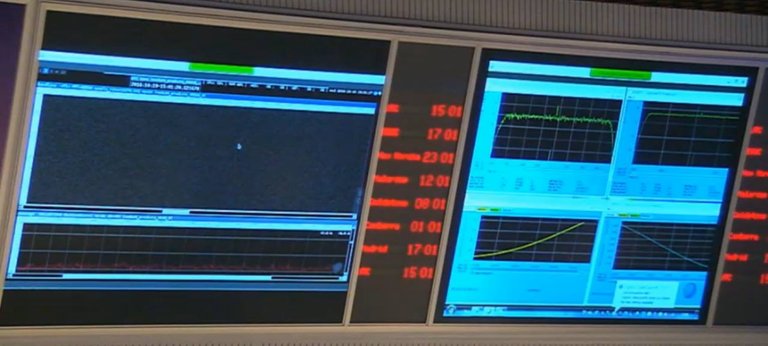
Mission control display of the frequency of the signal received from spacecrafts being watched
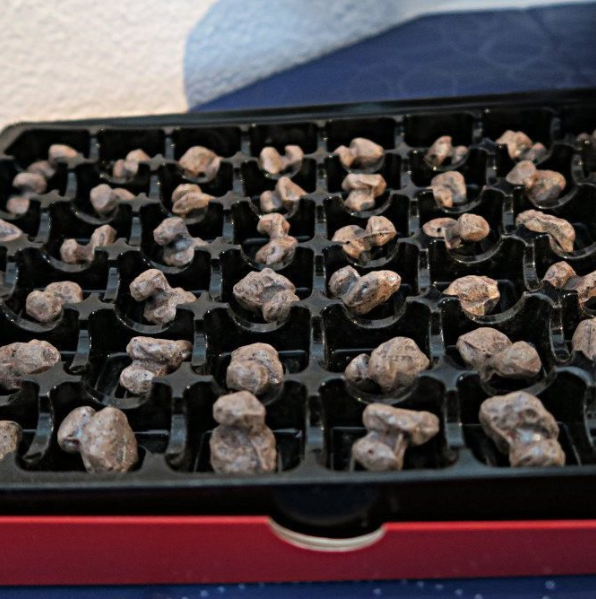
In the case of the Rosetta mission, everyone was waiting for the signal to die as that would indicate that the spacecraft had successfully crash landed on the surface of the comet, stopping all communications. At which point we could all applaud the successful ending to the 13-year-old mission, and enjoy some special-made Comet chocolate!
Anyways, that should serve as a decent sneak-peek into my life! I would like to thank @suesa for running the #suesas-sciencechallenge, as well as the @steemSTEM community for providing science-writers on steemit with an awesome community! I am very happy about my first ~3 weeks on the platform and look forward to share many more with you all!
Steem on :)

Hi! I have just discovered your blog, thanks for your space outreach efforts!
I work at Copernicus in the operations side, but I am very interested myself in downstream applications of Earth Observation, so I won't miss any of your posts
Great to hear from you @metabs ! Wonderful to see others working in the space sector here on steemit :)
Thank you for Resteeming my post as well. I hope you will enjoy more of the content that I write! (I am running two series one satellite images and applications which may be of interest)
Following you back and look forward to engaging more with you on this platform!
Interesting post @fredrikaa. These are some really awesome pictures too. Really brings everything in the post to life!
Awesome stuff. Keep on steeming on. Talk soon.
Thanks for sharing that, I use satellite images often for hobby research so its interesting to see a more professional side of it.
Also side question just incase you may know. Do you know anywhere where a civilian can get satellite images that would be better than what google earth currently has ? In particular the great lakes region of US.
That is a really big conference room table in the main meeting room btw lol
The meeting room is huge yes. It needs to be able to facilitate delegates (more than 1) from all 22 member states, other countries in optional programs, + key ESA staff at the same time :)
As for accessing satellite images, I have a section on that to end all my posts in my Beautiful Satellite Images of our Planet you won’t believe are real series. So you can see the links at the end of that article :)
You may access all images in 10meter resolution for free. There are some heavy restrictions on the use of images in resolutions high enough for people to be identified.
Wow, that's an awesome place. Man, you are living the dream. Hope you are still around when your time as an astronaut comes for us to see here.
Thank you @ertwro ! Yes I love the place, and life in Paris too :)
I'm here on steemit because I'm betting on it to be the next big things blogging and social-media-wise, so lets hope I can go to space and take steemit with me :D
Well done bro... you have a fascinating job and i really enjoy all the blogs that you add so far with the images from the satellites.
I don't understand why people are welcoming you on this post as if i am not wrong you are here already for like a month..
Keep the interesting and captivated blogs coming!
Thank you @georgemales ! I am happy that you are enjoying my posts! I am doing my best to find the right content for consistent series, while also sharing the new things that pop up, and appreciate all feedback and engagement I get from people like yourself!
As for welcomes, I think they are just bots.
Very interesting! Thank you very much for these insights! :)
You're welcome friend :)
You have an exciting job. I bet analysing all those data is exciting. Nice pictures. Thought you'll share more of space pictures. Maybe one with aliens on it. Lol.
It is amazing what people is able to do with that data. They are not only amazing or help us to predict weather or environmental crisis, some people is also working in algorithms that can predict China's growth, analyze the variations in the attendance of people to malls, etc. We will see very impressive data applications in the following years
We are in for a tech revolution that will blow our mind in the next 10 years
Let me welcome you to this community @Fredrikaa . I'm @chrisx and if you need any help don't hesitate to contact or follow me :-)
Welcome to the community, Fredrikaa !! Wish you much luck! Cheers! Follow me at @mekong
Congratulations @fredrikaa! You have completed some achievement on Steemit and have been rewarded with new badge(s) :
Click on any badge to view your own Board of Honor on SteemitBoard.
For more information about SteemitBoard, click here
If you no longer want to receive notifications, reply to this comment with the word
STOPThis is spam. This comment of yours does not make any sense to the post. Stop doing this!